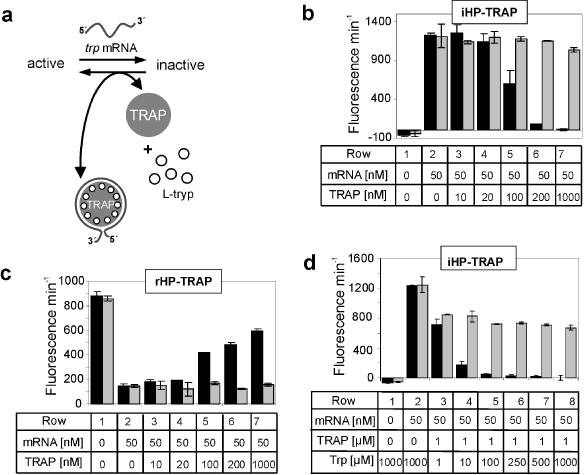Figure 4.

Sensing TRAP regulatory networks dependent on l-tryptophan. (a) In the presence of l-tryptophan (open circles) TRAP protein (grey shaded circle) is able to bind trp leader mRNA (grey). The presence or absence of l-tryptophan and TRAP causes the sequestration or release of trp-mRNA and thus shifts the equilibrium either in favour of inactive iHP–TRAP or active rHP–TRAP ribozyme conformations. (b) iHP–TRAP ribozyme activity regulated by increasing TRAP protein concentrations. Column 1, ribozyme alone; column 2, ribozyme/trp-mRNA (1 : 1); columns 3–7, ribozyme/trp-mRNA (1 : 1) with increasing concentrations of l-tryptophan-activated TRAP (10-1000 nM) (black bars). l-tryptophan concentration was 1.0 mM. The grey bars represent similar negative control experiments with 1.0 mM d-tryptophan. (c) Analogous to (b), but with the rHP–TRAP construct. Both ribozyme formats specifically respond to the interaction of l-tryptophan with the TRAP protein and the resulting formation of the TRAP/trp-mRNA complex. (d) l-tryptophan dependence of TRAP protein activation investigated using the iHP–TRAP ribozyme and a constant concentration of TRAP (1 μM). Assays were performed in the presence of l-tryptophan (black bars) or d-tryptophan (grey bars) at the indicated concentrations.
